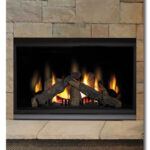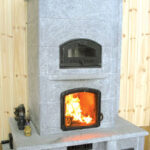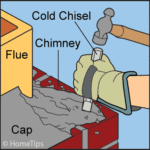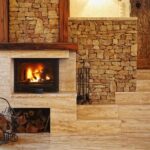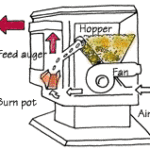A fireplace insert increases efficiency by maximizing the heat output of burning wood or other fuel.
Like a wood stove that is designed to fit inside a masonry fireplace’s firebox, an insert is designed to contain and radiate heat back into the room. It can increase the efficiency of your fireplace by up to 70 percent. Various types can burn wood, coal, natural gas, propane, or wood pellets.
A traditional masonry fireplace may feel like it’s heating your home, but in most cases it is only warming the immediate area. When a fire is burning, the fireplace is actually wasting energy and creating drafts as it sucks warmed room air up and out the chimney.
And a traditional fireplace does not take full advantage of the fuel it burns. Wood-burning fireplaces only release 5 percent to 10 percent of the warmth they generate into the room. The rest is lost through the chimney flue.
Insert Construction
A fireplace insert has its own firebox, which is surrounded by a cast-iron or steel shell. The fire is viewed through a window in the tightly sealed door on the front. As the firebox gets hot, the metal shell contains the heat and circulates it back into the room, often with the help of a blower. A decorative metal facing seals the fireplace opening around the stove.
Sizing an Insert
When purchasing a fireplace insert, look beyond appearance. Be sure to get one that is properly sized for your needs. It is important to get one that will fit the size of your fireplace and produce the right amount of heat. Measure the depth, width, and height of your fireplace so you’ll know a given insert will fit. Then consider the heat output. If an insert doesn’t have enough heat output, it won’t heat effectively. But if it pumps out too much heat, it may drive you out of the room.
An insert’s heat output range is measured in BTUs (British thermal units) per hour. (For more information, see What Is a BTU?) Inserts are designed to deliver from 30,000 to 85,000 BTUs per hour or more. The larger the room or area you want to heat, the more BTUs per hour the insert must deliver.
It is usually wise to work with a knowledgeable dealer when sizing a fireplace insert. Many variables come into consideration, including how well the home is insulated, whether the stove will be providing primary or supplementary heat, and so forth.
If you have a factory-built fireplace, check to see what types of inserts are rated to work with it—if any. In many cases, an insert cannot be used with a factory-built fireplace.
Installing an Insert
Installation is generally a job for a qualified professional, and some building codes require it. Inserts are required to be connected to a stainless-steel chimney liner that runs from the stove to the top of the chimney. This exhausts smoke directly to the outside and leaving the chimney flue free of creosote buildup.
Before installation, have the chimney cleaned. (A professional installer will usually include this service.) The liner goes in from the top, and the insert is attached to it inside the house. Be aware that if an insert has a blower it will need to be wired to the house’s electrical supply. And a gas insert needs to connect to a gas line.
Depending on a fireplace insert’s added features, such as blowers, thermostatically controlled fans, special finishes, materials, and hardware, it can cost between $1,000 and $2,500, not including installation or the cost of fuel and electricity.



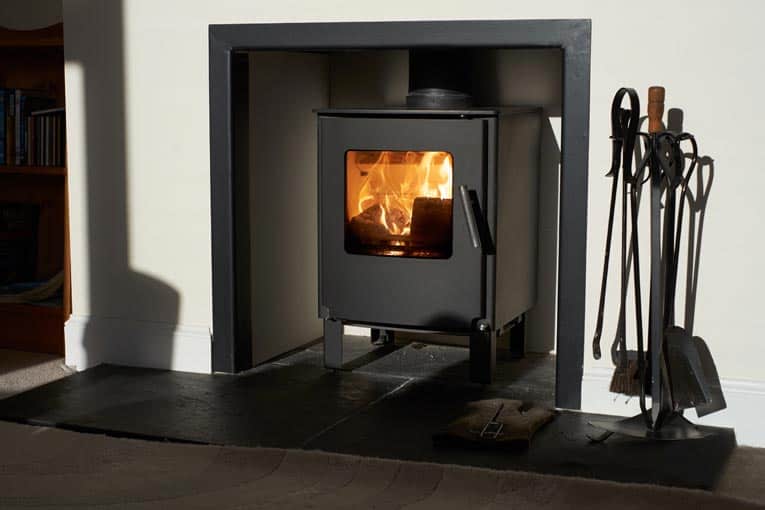
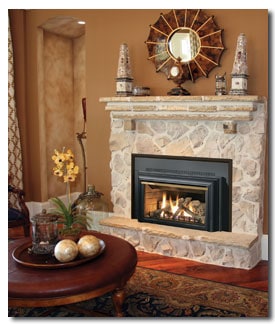

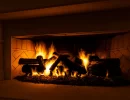
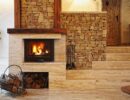

 Don Vandervort writes or edits every article at HomeTips. Don has:
Don Vandervort writes or edits every article at HomeTips. Don has:
